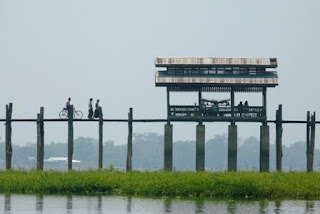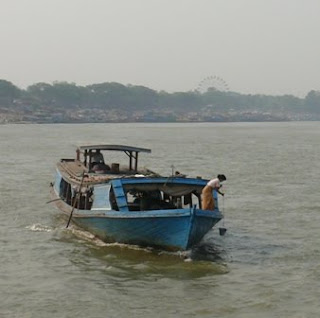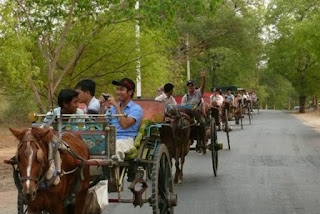I was lucky to stance the chance of visiting the symbol of Myanmar, which was said by Ajarn Sunait that “I have saved the best for last since if you go to Shwedagon at first, then you don’t want to see any other pagodas.”
- Moon
I must say that the site that left the biggest impression on me was our last site, Shwedagon Pagoda in Yangon. It was so beautiful and serves the justice of its popularity. The place was packed with both tourists and the locals because of its sacredness.
- Nat

The old name of Yangon is Dagon, as it appears in the name of largest pagoda in Myanmar that situated in the middle of city named Shwe Da Gon pagoda or Shwe Da Gon paya. The Shwe Da Gon is the landmark of Yangon. It can be seen from every direction of the town. It is believed that the Buddha hair is kept inside.
- Aon
The origins of Shwedagon are lost in antiquity, its age unknown. Long before the pagoda was built, its location on Singuttara hill was already an ancient sacred site because of the buried relics of the three previous Buddhas. According to one legend, nearly 5000 years had passed since the last Buddha walked the Earth, and Singuttara hill would soon lose its blessedness unless it was reconscrated with relics of a new Buddha. In order that such new relics might be obtained, King Okkalapa of Suvannabhumi spent much time atop the hill, meditating and praying. A series of miracles ensued and eight hairs of the historical Buddha were, somewhat magically, brought to the hill. To enshrine the relics, multiple pagodas of silver, tin, copper, lead, marble, iron and gold where built one on top of the other to a height of twenty meters. During the following centuries, passing from myth to historical fact, the pagoda grew to its present height of ninety-eight meters. Much of the continued construction of Shwedagon was actually reconstruction following disastrous earthquakes. During the 17th century the pagoda suffered earthquake damage on at least eight occasions. A particularly bad quake in 1786 brought the entire top half of the pagoda to the ground and its current shape and height date from the reconstruction of that time. Surrounding the pagoda are a plentitude of smaller shrines housing pre-Buddhist spirits called Nats, miracle working images, and even a wish granting stone. The entire temple complex radiates a palpable sense of beauty and serenity.
- Moon
Students who shared this experience:







Above: William Charles Bredesen (USA), Yoothasart Ngamin -Aon- (Thailand), Nquyen Anh Nguyet -Moon- (Vietnam) Below: Khamla Soubandith (Laos), Jesse Earle Odum (USA), Nguyen Anh Tai (Vietnam), Seang Sopheak (Cambodia)
 Overall, from this trip, I have learnt many things, from the different practices of Burmese culture, the Nats belief, the meaning of different stances of Buddha statues, the architecture and the different styles of various pagodas, to the way local people lead their lives. I will always treasure the memories from this trip and the fun that the class of Southeast Asian Studies shared in Myanmar. Thank you!
Overall, from this trip, I have learnt many things, from the different practices of Burmese culture, the Nats belief, the meaning of different stances of Buddha statues, the architecture and the different styles of various pagodas, to the way local people lead their lives. I will always treasure the memories from this trip and the fun that the class of Southeast Asian Studies shared in Myanmar. Thank you!- Patarin Khaochan (Nat)
Thailand














































